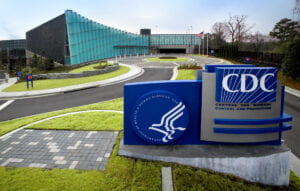
By Rick Valachovic, DMD, MPH, Clinical Professor and Director of the NYU Dentistry Center for Oral Health Policy and Management
Let’s be honest — none of us were prepared for the COVID-19 pandemic. Still, it’s undeniable that the Centers for Disease Control and Prevention (CDC) was caught flat-footed. The agency’s decision to stick with testing protocols that were no match for the fast-moving coronavirus was the first of several missteps, and they undermined the public’s trust in the once vaunted institution. The erosion has been profound. At the start of this year, 43% of poll respondents — up from 13% in April 2020 — told NBC News that they did not trust the CDC’s coronavirus information.
In the face of this reality, the agency announced this spring it would conduct a one-month review of its structure, systems, and processes. “Never in its 75-year history has CDC had to make decisions so quickly, based on often limited, real-time, and evolving science,” CDC Director Rochelle Walensky, MD, MPH, said in the April announcement. The agency also had to contend with political pressures and years of disinvestment in the nation’s public health infrastructure. Regardless, Walensky acknowledged the CDC must do better the next time a public health emergency occurs and integrate the lessons learned during the current pandemic into “a strategy for the future.”
So, what have we learned from recent events? The CDC has yet to issue its report, but some lessons are all too clear. First and foremost, we can no longer take the CDC — and the rest of our public health system — for granted. In a fascinating online discussion, hosted by the Harvard T.H. Chan School of Public Health, five former CDC directors talked about what went wrong at the agency during the pandemic and what can be done “to rebuild the CDC’s capacity and restore its credibility.” Here are the lessons I took away and other food for thought.
Lesson 1:
Radically increase our investment in public health.
“We have to approach our nation’s health defense with the same urgency we approach our military defense in peacetime,” said Tom Frieden, MD, MPH, CDC director from 2009 to 2017. “We don’t cut military and intelligence-gathering capabilities so that we’re at risk. Why, then, are we starving our health defenses?”
Walensky’s predecessor at the CDC, Robert Redfield, MD, who retired from the U.S. Army as a Colonel, echoed those remarks. “I personally believe that our national security is much more impacted by the capacity of our public health system in this nation than it is by North Korea, Iran, China, or Russia, and yet we don’t invest proportionately to that,” he said.
“We’re basically operating a CDC and a public health system right now that’s funded, on a per-capita basis, less than it was in the 1950s in real dollars,” said Julie Gerberding, who served as CDC Director from 2002 to 2009. Making matters worse, many of those dollars are earmarked in response to specific needs, leaving the agency without “any capacity to continually improve both our bio-preparedness” and to make sustained investments in health equity and chronic disease prevention. “That just doesn’t make any sense in this day and age,” Gerberding observed.
The Biden administration has requested almost $10.7 billion in discretionary budget authority for the CDC in fiscal year 2023, an increase of $2.3 billion over this year’s budget, but as we all know, Congress will ultimately decide whether the CDC receives that funding and how much of it comes “with strings attached.”
Lesson 2:
Modernize how we collect and share data.
It’s hard to believe, but the CDC is highly dependent on other entities for its access to data. Fifty states and more than 3,000 local jurisdictions submit data to the CDC, but they decide what to submit, what format to use, and how their data may be shared. According to Bill Roper, CDC director from 1990 to 1993, we need to create a standardized, nationwide, public health data system the CDC can rely on, and until we do, “Every governor can basically say, ‘No, I don’t think we’re gonna do that,’ and that just blows the whole thing apart.”
The agency only began receiving COVID-19 hospitalization and laboratory data when the Trump administration declared a public health emergency at the start of the pandemic. When that declaration lapses, the agency could lose its access to key metrics needed to track the spread of the virus.
Fortunately, Congress has allocated more than $1 billion since 2020 to support the CDC’s data modernization initiative. In the last year, the agency also created a national Center for Forecasting and Outbreak Analytics to “enable timely, effective decision-making to improve outbreak response using data, modeling, and analytics.” Congressional support for both these initiatives is a great start, but lawmakers will need to sustain that support over many years to create the reliable data and forecasting systems the agency envisions.
Lesson 3:
Take the long view—in time and space.
This lesson is essential to improving public health, and there’s good evidence to back it up. Bill Foege, MD, MPH, who directed the CDC under Presidents Carter and Reagan, reflected on the work done during his tenure to eradicate smallpox. “Our investment … has been recouped every three months, which means that, since smallpox disappeared, our investment has come back 160 times,” he said. “It’s the same with immunization. For every dollar we put into immunization, we get at least 10 dollars back.” He also stressed the importance of looking beyond our borders. “We are involved in global health, and we can’t walk away from that. This is part of protecting us,” he asserted, noting how coronavirus variants developed in less vaccinated parts of the world.
If enough policymakers adopted Foege’s longer view, they might also support expanding CDC investment — a mere $19.5 million in 2021 — in the nation’s oral health. Historically, the agency’s oral health initiatives have been part of an orphan program, disconnected from most other agency initiatives. At present, the CDC funds health departments in 20 states and Puerto Rico to implement school-based sealant programs, community water fluoridation, and/or chronic-disease surveillance programs that encourage the integration of medical and dental care. That’s commendable, but I’d love to see this happening in all U.S. states and territories.
Lesson 4:
Restoring trust will be a heavy lift.
“Worldwide, people have lost faith in institutions,” and the CDC is no exception, observed William Roper, MD, MPH, CDC director from 1990 to 1993. “People are so anxious for a pronouncement from on high that is permanent and forevermore, and that’s just not the scientific process,” he said.
Redfield laid part of the blame on the complex structure of federal public health, noting the CDC director reports to the Secretary of Health and Human Services who reports to the President, and there may be a special White House advisor on health who must also be consulted. “It’s the lack of perception of independence that has undercut trust,” he believes.
How can the CDC restore trust in its authority? Roper thinks it will require speaking with humility and contextualizing pronouncements with, “This is our best advice given what we know today. We may know [something different] tomorrow, and if it is different from what we know today, we will change our advice tomorrow…. People should value that humility.”
Lesson 5:
Nothing will happen without the workforce to do it.
Whatever does or doesn’t change at the CDC in the months and years ahead, we’ll need to build back our public health workforce if we’re to withstand the next public health emergency. As Walensky pointed out during a White House briefing in April, “During the decade prior to COVID-19, the public health workforce lost an estimated 60,000 jobs nationwide.” That was before the pandemic drove still more people to leave the field, including dentists and dental hygienists.
One ray of light: The American Rescue Plan sets aside federal dollars to recruit, train, and develop the next generation of public health leaders. So far, 80 grants have been awarded to 32 states through Public Health AmeriCorps, a partnership between AmeriCorps and the CDC. Once again, it’s a good start, but the initial investment will fund fewer than 3,000 positions — a tiny fraction of workforce we need. With now more than one million U.S. COVID-19 deaths officially counted — more than on battlefields in all the country’s wars combined — it is essential that we take these lessons to heart and act on them at scale before the next public health crisis occurs.

Outstanding , accurate, and welcome analysis!!!
Hope the politicians and health administration listen up!! Thanks Rick!!